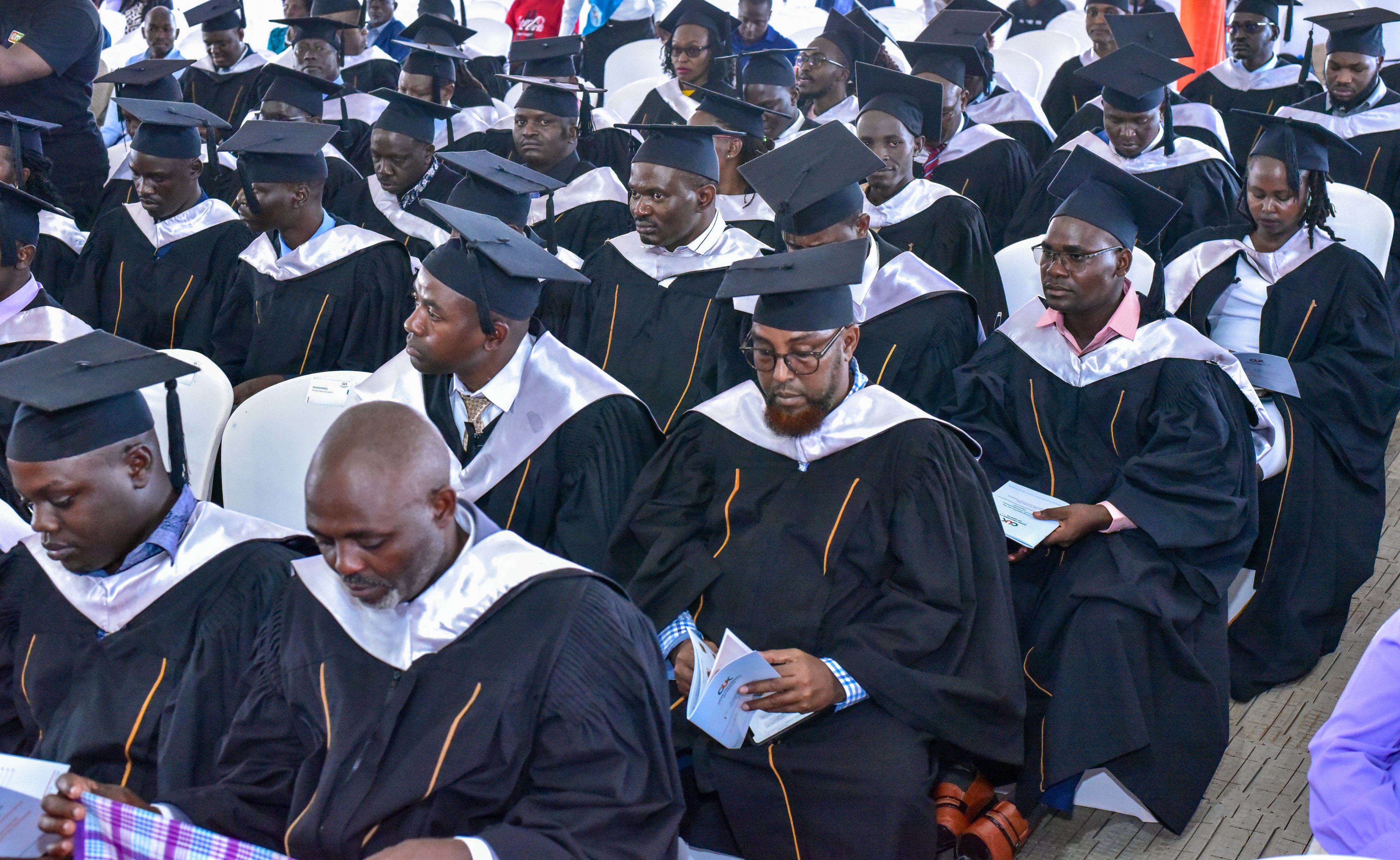

The government this year introduced a new university funding
model it said would accord learners from vulnerable households equal
opportunity to pursue higher education.
The student-centred funding model allocates
scholarships and loans based on students' financial capabilities using a Means
Testing Instrument (MTI).
The MTI places learners across five funding
bands with those in Band 1 getting the most government support of up to 95 per
cent, comprising 70 per cent scholarship and
25 per cent loan.
Band 1 targets families whose monthly
income is not beyond Sh5,995 and requires families to pay 5 per cent of the
fees. Students under this band are
entitled to a Sh60,000 upkeep loan from Helb.
Band 2 targets families whose monthly income does not
surpass Sh23,670 but is above Sh5,995.
Government scholarship covers 60 per cent while loan
allocation is 30 per cent.
Families under this category pay 10 per cent of the fees
while students get Sh55,000 upkeep loan.
Band 3 is for families with monthly income above Sh23,670
but less than Sh70,000.
Government scholarship under this
category is 50 per cent and 30 per cent loan while families contribute 20 per
cent of the fees. Students receive a Sh50,000 upkeep loan
Band 4 is for families with monthly income above Sh70,000
but below Sh120,000.
The government scholarship covers 40 per cent while loan covers
30 per cent.
However, the new system sparked uproar with a
number of students claiming they were placed in the wrong bands that requires them
to pay fees that are way beyond their families’ financial capability.
Most students appealed their placement, saying they were
placed in Band 5, which grants them 30 per cent scholarships and 30 per cent
loans, requiring them to foot 40 per cent of the requisite fees.
Concerned by the mounting upheaval, Parliament summoned senior
Education officials led by CS Julius Ogamba to explain why a funding model designed
to ease fees burden from students was facing resistance from the beneficiaries.
While appearing before the National
Assembly’s Education Committee on September 24, CS Ogamba admitted that
the model had proven problematic to most students.
He said out of the 138,535 placed in public universities,
only 75,000 students had managed to pay the requisite fees for their respective
bands.
The CS blamed the erroneous placement on inaccurate
information provided by learners during application for loans and scholarships
on the MTI.
“The Means Testing Instrument is
designed to utilise the data provided by students to determine their level of
need. The accuracy of the categorisation of students into various bands depends
on the correctness of the information that applicants provide,” the CS told
MPs.
The Principal Secretary for the State
Department for Higher Education and Research, Beatrice Inyangala, had
previously told the committee that some students visited cyber cafes to apply
for loans and scholarships and the shop assistants may have made errors while keying
in details on students’ household income.
Ogamba said 11,132 students had appealed
their banding, and the review of the cases was expected to commence this December.
The Education Committee members demanded
an overhaul of the funding model, which they claimed relied on misleading
variables to determine income for households.
The same day, the government unveiled a 129-member
committee to review the new funding model with a view to establishing the
accuracy of the variables relied upon to categorise learners.
“As a ministry, we promise to provide a
conducive working environment for the national committee to deliver on its
mandate effectively,” Ogamba said during the inauguration of the committee on
September 25.
Speaking during the event, PS Inyangala
said the government was keen on ensuring access to affordable and quality
higher education.
“Today I’m convinced that the collective
wisdom among the inaugurated committee as well as other stakeholders in this
room will give us a solution that would make our university and TVET education
sustainable for the prosperity of our students as we look forward to world-class
education,” she said.
Ruto unveiled the New Higher Education
Funding Model on May 3, 2023, saying it would afford learners from vulnerable
backgrounds access to higher education.
The government earlier this year
introduced the banding system to afford learners from vulnerable backgrounds
access to university and Technical Vocational and Training Institutions (TVETS) through
loans and scholarships.
While speaking during a town hall
dialogue with Mombasa residents on July 28, President Ruto said the previous
funding model that guaranteed every student 80 per cent loans became
unsustainable as student populations increased.
“What ended up happening is that while
we committed to pay 80 per cent, we ended up paying 50 per cent, some cases 45
per cent, so there was a huge funding gap and universities were struggling and
we ended up affecting the quality of our education, we ended up compromising
our education,” he explained.
The President said it was at this point that the government
thought of changing the funding model such that the able parents pay more
compared to the less fortunate.
“We said there are parents like William Ruto who can afford.
Why would a child of William Ruto be given 80 per cent scholarship same as a
child of mama mboga?” he asked.
The President further said the new funding model had enabled the government to increase budgetary allocation to
universities from Sh45 billion to Sh82 billion in the current financial year,
effectively saving universities from economic meltdown.
“When I came into office, they had a Sh60 billion debt, it was near a crisis so it became necessary,” Ruto said.








